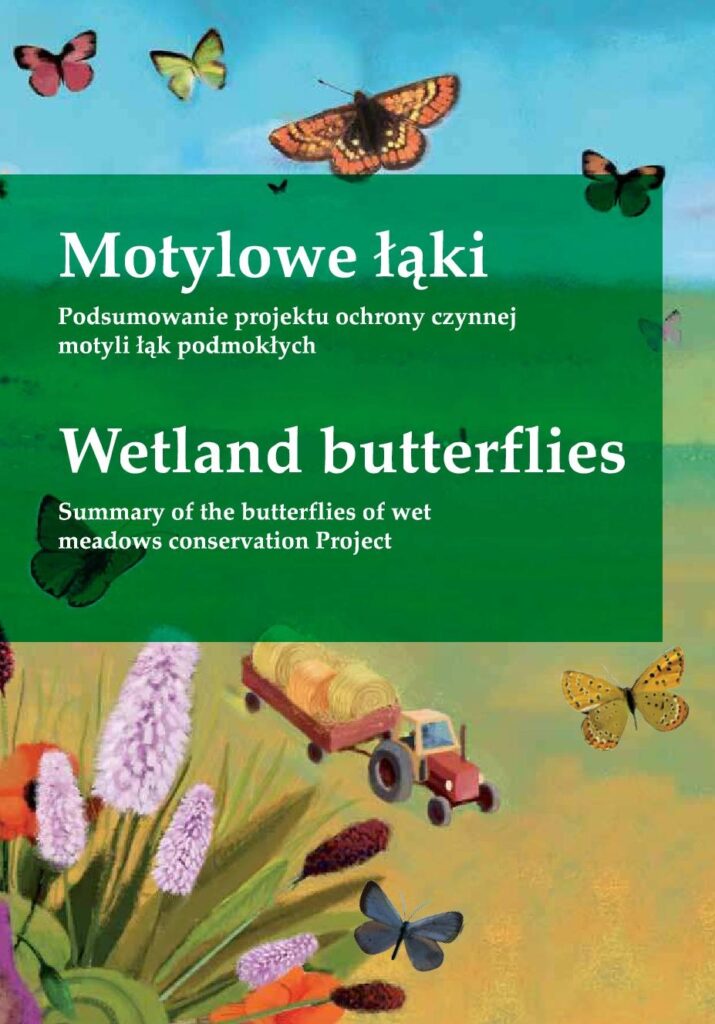
January 2010 | Print | Brochure
Summary of the active protection in the project Wetland butterflies
The conservation of biodiversity in open country depends to a large extent on appropriate management by man. Agriculture enabled the expansion of areas where open country fauna and flora existed in a natural way. On the other hand, changes in agriculture can pose threats to such species, which has been discussed in further down the study. Semi-natural wet meadows are habitats for many valuable species protected in Natura 2000 sites. We can find there many bird species, such as dignified cranes (Grus grus), bringing happiness white storks (Ciconia ciconia), hunting marsh harriers (Circus aeruginosus), or corn crakes (Crex crex) hidden in high grass. We can observe colourful butterfly species on sunny summer days. Some of them a completely dependant on the survival of wet meadows. Many butterfly species are at risk of extinction or their populations drop. That was the reason for the preparation of the conservation project for these colourful insects: “Conservation and Upgrading of Habitats for Rare Butterflies of Wet, Semi-Natural Meadows”, the “Wetland Butterflies” for short. Fauna for which the project actions had been prepared comprises six butterfly species: Scarce Large Blue (Phengaris (Maculinea) teleius), Dusky Large Blue (Phengaris nausithous), Violet Copper (Lycaena helle), Large Copper (Lycaena dispar), False Ringlet (Coenonympha oedippus) and Marsh Fritillary (Euphydryas aurinia).



 POWRÓT
POWRÓT